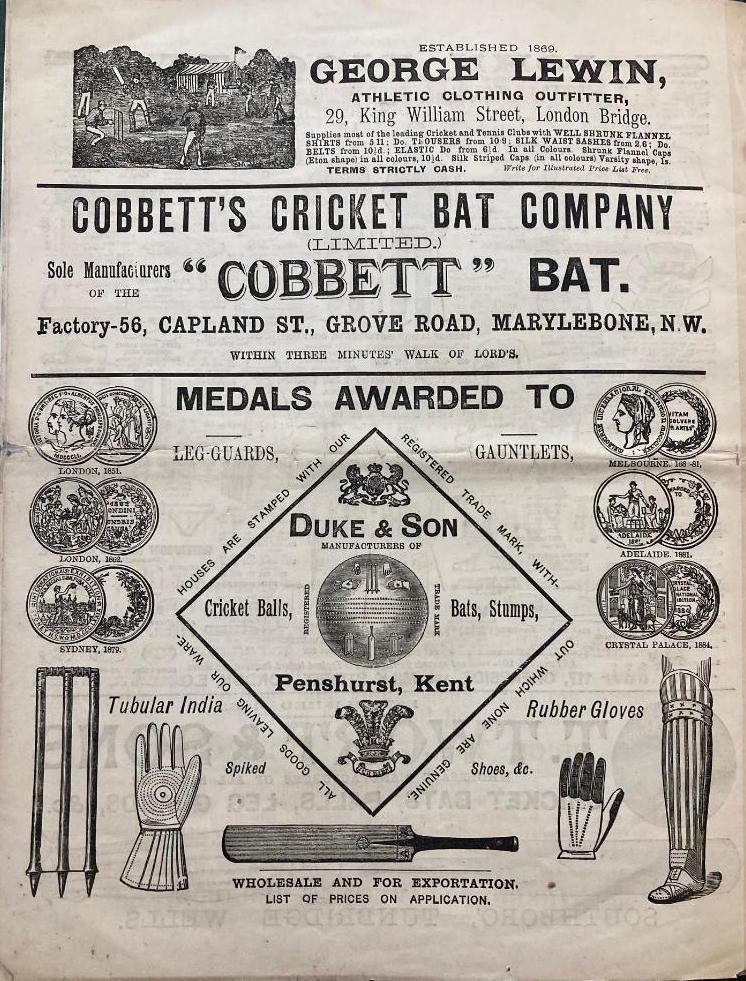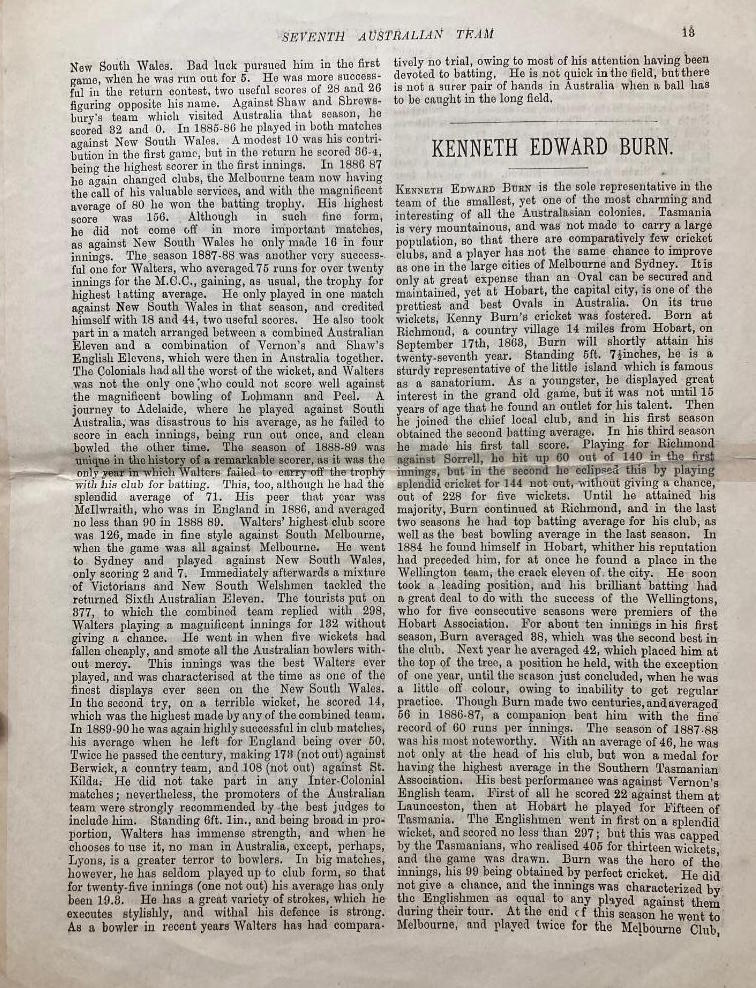Martin Chandler | 9:30am GMT 11 February 2024
The primary abroad tour was to North America, again in 1859. The English aspect, a robust one containing such luminaries because the captain George Parr, John Wisden and William Caffyn, had been accompanied by Fred Lillywhite of the well-known household, who organised the journey and afterwards printed the primary tour account.
After that common journeys from England to Australia and Australia to England started, and the primary Take a look at match was performed in Melbourne in 1877. Various modern accounts of these journeys appeared, and there have been different retrospective accounts since.
Tour books have, through the years, turn into one of many favoured targets of cricketing bibliophiles as have the the associated topic of pre tour brochures. By their nature slimmer and extra ephemeral such brochures, initially supposed primarily as a car to introduce the vacationers to a wider viewers, have proved to be at the least as collectable because the tour accounts that would seem later.
As the 20th century wore on the tour brochure modified and have become what amounted to a shiny journal, nearly a guide in itself. There was lots to learn, however they misplaced their attraction, and after the Nineteen Seventies grew to become one thing else.
Over time, as I acquired increasingly books, I began to gather the brochures as nicely. Like books the overall rule is the older a brochure is the rarer and costlier it turns into, so when was the primary?
It wasn’t a query that occurred to me till just lately, however as one or two from the Eighteen Nineties got here inside attain it grew to become one thing I wanted to know. The reply is, in fact, within the sport’s bibliography and a fast look by the assorted incarnations of Padwick gave me the reply. The primary was for the 1890 Ashes contest.
There have been three Exams scheduled for 1890, and the 13 man Australian get together had, by twenty first century requirements, an eye fixed watering 34 First Class fixtures organized. Nobody has ever written an account of a tour through which England received at Lord’s and the Oval and the third Take a look at was (at Previous Trafford) deserted and not using a ball bowled. The rival captains had been two males who would turn into good pals, Billy Murdoch and WG Grace.
In 1890 there was one established cricketing periodical in England, Cricket: A Weekly Report of the Recreation had begun in 1882. From the off there was a hyperlink between what’s extra broadly recognized merely as Cricket, with a journalist in Australia, Clarence Moody.
Moody, a South Australian, typically wrote on cricket beneath the byline of Level. He had been born in 1867, the son of a printer, so it was no shock that he started working for his father’s newspaper in 1881 and from 1889 wrote on cricket. He additionally coated politics and Australian Guidelines Soccer (as Goalpost).
Moody got here to England in 1890 with Murdoch’s group, and at the beginning of the tour Cricket’s writer issued their landmark brochure, The Seventh Australian Group in England 1890, sub-titled Biographical Sketches.
The brochure consists of 20 pages, together with the entrance and rear covers. There’s a single group {photograph} on the entrance cowl, and that aside the primary 4 pages and the final 4 are promoting. All of the advertisers are suppliers of sporting items, amongst them a well-known identify, Dukes.

The remaining twelve pages comprise biographies of the 13 gamers, and a quite shorter certainly one of supervisor and former Take a look at participant Harry Boyle. The ‘sketches’ are real pen portraits and never the the brief introductions that had been to turn into the norm in years to return. By far probably the most attention-grabbing, and the one which instantly caught my eye, is that of Ken Burn.
I bear in mind the Burn story from my childhood. A Tasmanian, legend has it (confirmed in Wisden so it have to be true) Burn was supposedly chosen as reserve wicketkeeper solely to, someplace on the journey over to England, admit he had by no means saved wicket in his life. Having learn Moody on Burn I’ve to say that it appears to me that Wisden might nicely have been offered a pup with that story, and that editor Sydney Pardon actually ought to have spoken to Moody, or at the least learn his brochure.

Moody went on to put in writing 4 cricket books. Essentially the most vital appeared in 1894, Australian Cricketers 1856-1894. Primarily an anthology Moody’s guide additionally contained a listing of Take a look at matches between England and Australia which has been accepted as definitive ever since. Within the guide he additionally revived the thought of contests between the 2 international locations being for ‘The Ashes’.
The remaining three Moody titles all appeared in 1898. One was George Giffen’s autobiography, With Bat and Ball, which Moody ghosted. South Australian Cricket: Reminiscences of Fifty Years was one other, this time a set of articles that had initially appeared within the Adelaide Observer and South Australian Register newspapers. It’s a guide that the present famous Australian historian Bernard Whimpress felt sufficiently necessary to justify the publication of a facsimile version of eighty copies in 2016.
For a lot of the most effective of Moody’s contributions to the literature of the sport is Cricket Album: Famous Australian Gamers. This was, within the method of a handful of up to date English publications, initially printed in weekly elements after which sure collectively. It isn’t as massive as Alcock’s Well-known Cricketers and Cricket Grounds, or CB Fry’s Ebook of Cricket, nor as substantial as Cross-Standing’s Cricketers of Yesterday and At present. It’s nonetheless a factor of magnificence, printed on prime quality paper and nicely value investing in comprising images of the main Australian cricketers of the day accompanied by transient pen footage.
After that burst of exercise there have been to be no additional books from Moody, though he continued writing for newspapers. In that respect ventures of his personal in Adelaide weren’t profitable, and after the Nice Warfare Moody moved to Sydney the place he joined the Sydney Solar. He died aged 70 in 1937.








